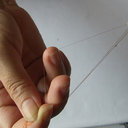[Experimental study for the anti-fatigue effect of ginseng general ginsenosides P.E. in vivo].
Keywords
Abstract
OBJECTIVE
To investigate the effective dose and the possible mechanism of the anti-fatigue effect of ginsenosides and then deduce to the recommended intake of human body.
METHODS
Healthy adult male SD rats intook ginsenosides solution every day through stomach at doses of 50, 150, 250 mg/kg per day, other rats were divided into untreated group and model control group, given equal amount of distilled water for 30 days. Conducted exhaustive swimming experiment for rats except untreated group on the last day of gavage after 30 minutes. Determine the time of the exhaustive swimming, organ coefficient, liver glycogen, muscle glycogen, malonaldehyde (MDA) of liver cells, superoxide dismutase (SOD) of liver cells, Na+ -K+ adenosine triphosphatase (Na+ -K+-ATPase) and Ca2+ -Mg2+ adenosine triphosphatase (Ca2+ -Mg2+-ATPase) of erythrocyte, blood lactate, fumaric reductase.
RESULTS
The body weight of rats middle, high dose group were higher than that in model control group after exhaustive swimming (P < 0.05). The time of the exhaustive swimming of high dose group were longer than model control group (P < 0.05). Some organ coefficient of model control group have statistically significant compared with other groups (such as brain, kidney, adrenal, thymus coefficient) (P < 0.05). The activity of SOD of liver cells of untreated group, middle dose group and high dose group were higher than model control group and low dose group (P < 0.05), but the level of MDA of liver cells of them were lower than model control group and low dose group (P < 0.01), the activity of Na+ -K+-ATPase of erythrocyte of untreated group and high dose group were higher than model control group (P < 0.05), but the activity of Ca2+ -Mg2+-ATPase of erythrocyte of each group had no statistical significance (P > 0.05). The level of liver glycogen, muscle glycogen and fumaric reductase of model control group were lower than untreated group and high dose group (P < 0.05).
CONCLUSIONS
At the experimental conditions, ginsenosides solution of 250 mg/kg can improve the tolerance of rats in fatigue campaign and have the function of anti-fatigue.




